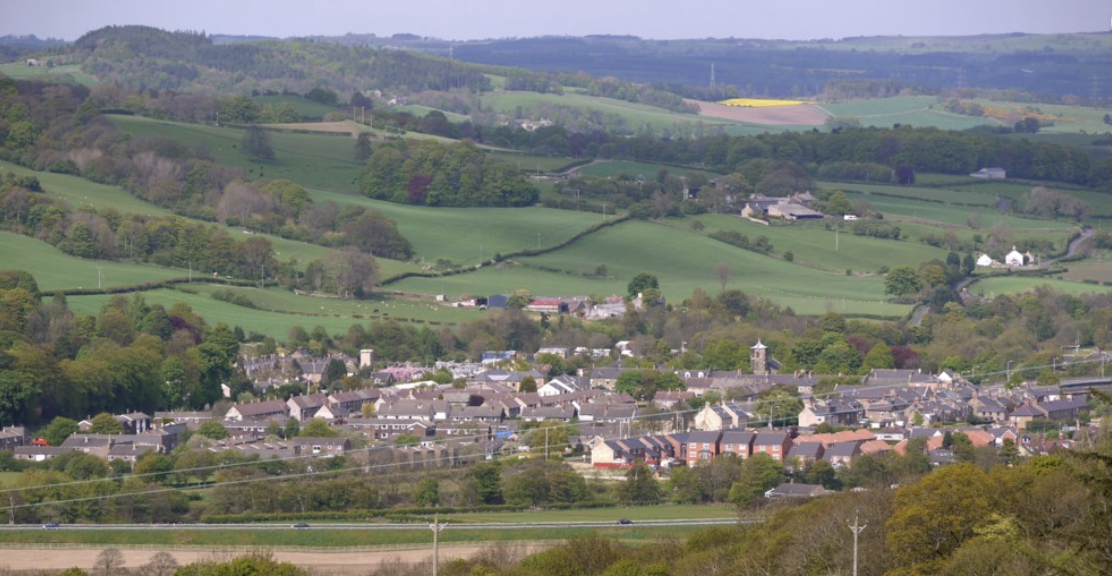District Heating System Project (technical feasibility) - Haydon Bridge
Haydon Bridge is one of the first rural towns in the UK to investigate using a district heating system, and one of the first to look at developing a community-owned and managed system.
District heating would use locally generated, low carbon energy to circulate heat to homes and businesses across Haydon Bridge. As a community-owned asset, it would bring maximum benefit to the village.
District heating systems are popular across many Scandinavian countries, and are increasing in number across cities and towns of the UK. The Sage and Baltic, along with central Gateshead, are heated by district heat systems, as are many National Trust properties such as Wallington.
Why district heat?
There are many reasons to develop different heating systems for the village, but the main ones are environmental and economic. Using oil to heat homes is expensive and produces high emissions. Oil fired boilers are likely to be phased out in the short to medium term, and oil is likely to get more expensive and more difficult to source.
By developing community energy systems, the work, costs and risks are taken by a central organization (rather than each household) and all revenue and employment opportunities are retained locally.
Who is involved?
This project has been instigated by the Haydon Bridge Community Partnership. Community Action Northumberland is leading the project, with support from the Rural Design Centre. The technical feasibility study will be completed by local experts, Reheat. Northumberland County Council is also involved, providing advice and political support.
When is it happening?
The first stages of the feasibility study have already started, and mapping of the energy usage of the town is underway, as well as identifying and contacting those who may be directly involved in the earliest stages of the project.
We expect the feasibility study to be completed by late summer, and the findings will determine the next steps.
FAQ’s
What are the environmental benefits?
Over 90% of properties in Haydon Bridge use fossil fuels for heating, with a high reliance on oil and coal, the most polluting forms of fuel.
Moving to renewable energy and low carbon sources for heating will have a big impact on emissions across the community, making a strong contribution to Northumberland’s Net Zero targets.
Residents will be able to get rid of their oil boilers.
What are the economic benefits?
While the specific details of individual’s bills are not yet known, experience has shown that community district heat systems, when powered by renewable energy can lower household fuel bills significantly.
This is especially the case when compared to the cost of oil.
As a community owned and managed scheme, all revenue generated will remain within the community and the project will bring local employment opportunities.
Image of Haydon Bridge (© Copyright Andrew Curtis)
What does this mean for me, as a resident / home owner in Haydon Bridge?
This will be a long-term and phased project. If it goes ahead, we hope that eventually all properties in Haydon Bridge will be connected to the network, but this will take decades.
As oil boilers come to the end of their lives, residents will consider joining the district heating network. The more people join, the more successful the scheme will be, bringing more benefit to Haydon Bridge. There will be no requirement to join if you do not want to.
As a system is installed, there is some short term disruption to the community as pipes are laid in the roads. The nature, scale and duration of the disruption will be weighed against the long-term benefits a district heating system would bring.
All houses joining the scheme will keep full control over their home’s heat and hot water, with hot water available on demand, and meters in each home to make sure bills for the energy used are accurate.
If you currently have a “wet” system, with radiators powered by hot water, there is very little change to the system inside your house. If you are not currently on this system, you would have to install radiators or underfloor heating.
What do I have to do?
Nothing right now! But if you would like to be involved in the feasibility project, please contact us on hello@ruraldesigncentre.com.
Who are the project partners?
Who is funding the project?
The funding for this project has come from the North East Combined Authority. CAN is leading the project, and Reheat were successful in wining the competitive tender process to deliver the feasibility study.
How do I stay up to date with the project?
Please register your interest in the project by emailing hello@ruraldesigncentre.com. Progress will be updated here as well, so please do check back.









